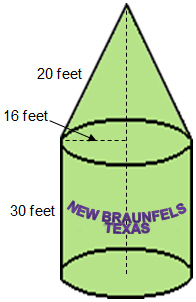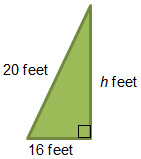Finding the volume of a composites figure is like finding the volume of each individual solid figure. These individual solid figures such as prisms, cylinders, pyramids, cones, and spheres are combined to make three dimensional solids called composites figures.
Let's return to our example of the water tower.
The figure represents the water tower for a local town. Climatologists are forecasting a drought, and the mayor of the town wants to know how much water the water tower can hold when it is completely full. Determine the volume of water that the full water tower can hold.


